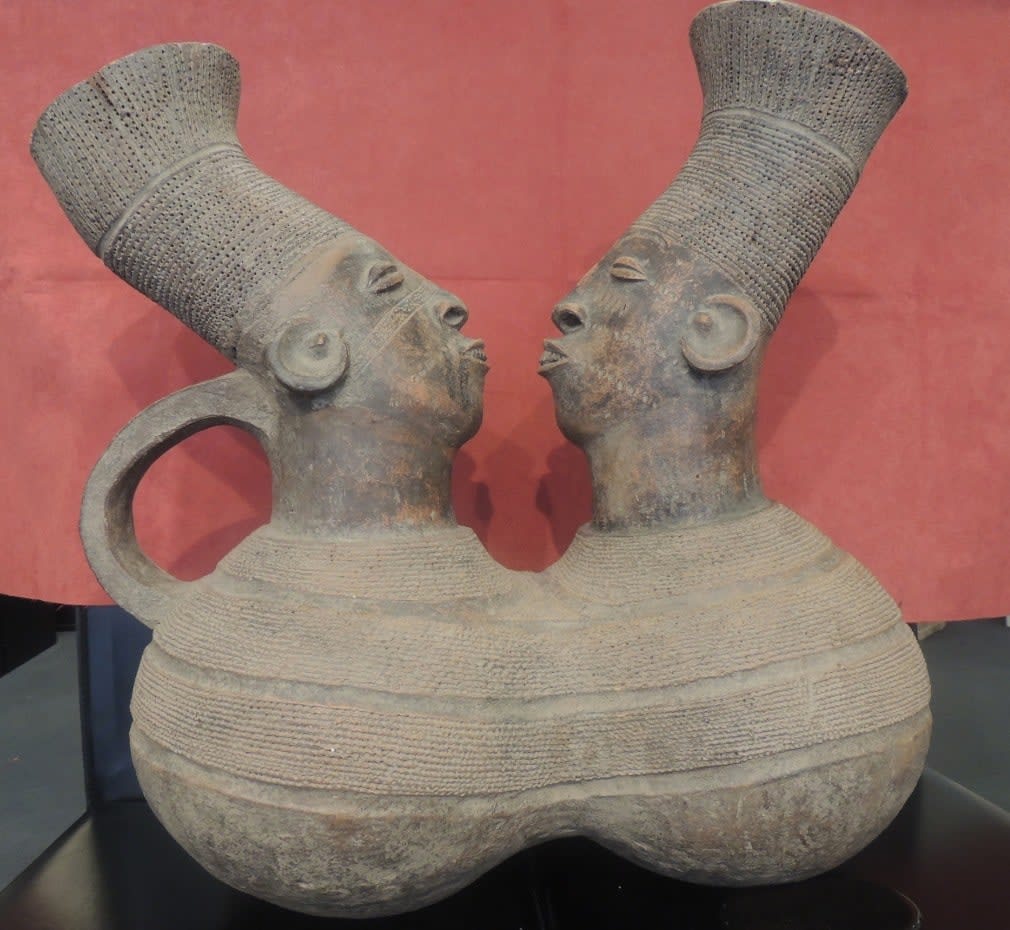Mangbetu Terracotta Vessel, 1890 CE - 1950 CE
Terracotta
26.7 x 26
AM.0042
The Mangbetu people originally came from modern day Sudan but migrated to north-east Zaire in the nineteenth century. By this date there was already a well established tradition of producing...
The Mangbetu people originally came from modern day Sudan but migrated to north-east Zaire in the nineteenth century. By this date there was already a well established tradition of producing utilitarian terracotta vessels with striking incised decorations. The fashion for anthropomorphic vessels was a late and relatively short-lived phenomenon, flourishing between the 1890s and the 1920s. This double-headed example is a particularly fine example of this development. A similar vessel was collected by the mammalogist Herbert Lang in 1913 during his famous trip to the Congo and is now in the American Museum of Natural History.
Elaborate terracotta vessels such as this one were the preserve of Mangbetu chieftains and wealthy European visitors. Their precise function is unclear but they were obviously high status items that lent their owners considerable prestige. Although equipped with a wide loop handle, the presence of two openings angled in different directions would have made the vessel impractical for pouring. The two female heads have elongated skulls reflecting the Mangbetu practice of binding the heads of infants with raffia. The fan-shaped coiffure also represents a fashion amongst wealthy Mangbetu women. Although there is considerable symmetry apparent in the two heads, there are also subtle differences, such as the varying markings on the cheeks. The parted lips and regular teeth are found on many of the other surviving examples of this genre. The vessel is in excellent condition and would make a rare and striking addition to any collection.
Elaborate terracotta vessels such as this one were the preserve of Mangbetu chieftains and wealthy European visitors. Their precise function is unclear but they were obviously high status items that lent their owners considerable prestige. Although equipped with a wide loop handle, the presence of two openings angled in different directions would have made the vessel impractical for pouring. The two female heads have elongated skulls reflecting the Mangbetu practice of binding the heads of infants with raffia. The fan-shaped coiffure also represents a fashion amongst wealthy Mangbetu women. Although there is considerable symmetry apparent in the two heads, there are also subtle differences, such as the varying markings on the cheeks. The parted lips and regular teeth are found on many of the other surviving examples of this genre. The vessel is in excellent condition and would make a rare and striking addition to any collection.
